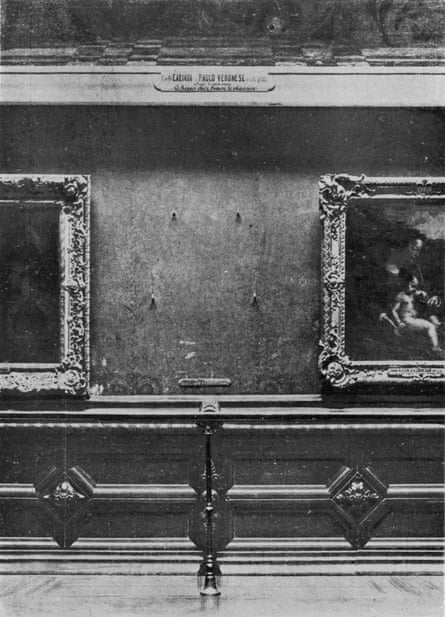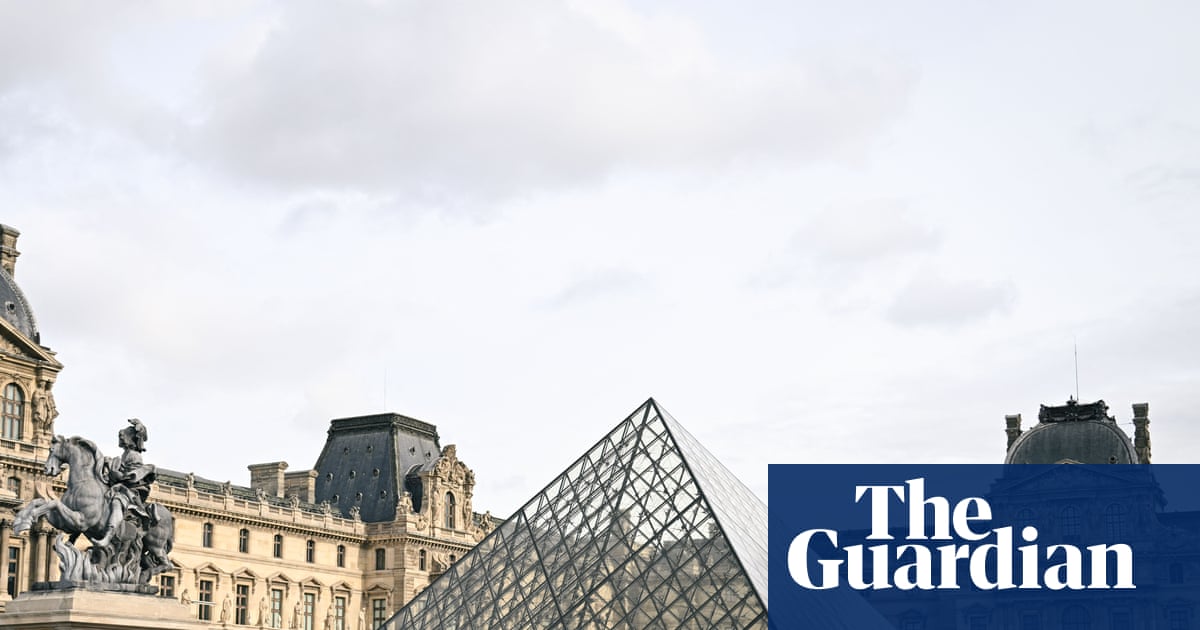A Louvre treasure missing: search for a Leonardo da Vinci picture
23 August 1911
One of the most precious treasures of the Louvre, Reuter’s Paris correspondent says, has disappeared. The discovery was made at midday yesterday, and the picture gallery was immediately closed, while the Minister of Fine Arts was advised by telegraph. The picture is the portrait by Leonardo da Vinci of Mona Lisa, the wife of Francesco del Giocondo, a citizen of Florence. According to Vasari, Leonardo de Vinci devoted four years to the portrait. It is styled “La Joconde,” and was purchased about the year 1500 by Francis I.
There was the greatest consternation when the picture was missed. An energetic search is being made in all directions, but it has so far been fruitless. The frame and glass were left on a staircase of the Louvre.
Continue reading
Paris and the theory of a hoax
24 August 1911
The belief gradually gains ground in Paris that the disappearance from the Louvre of La Gioconda, the masterpiece to which Leonardo is said to have given four years, is due to a journalist who wished to prove the inadequacy of the protection afforded to national art treasures. The Matin and the Excelsior protest against the idea of such a hoax, which they describe as scandalous. Interviewed by a representative of the Figaro, M Lepine, the prefect of police, appeared to accept the hoax theory, and M Benedite, the temporary keeper of the museum, also cannot believe that the picture has been stolen. M Reinach, on the contrary, is pessimistic. Newspapers also give some support to a theory that a maniac stole the picture.
Ministers, the prefect of police, curators, attendants, and detectives have minutely ransacked every part of the Louvre, from the at basement to the attic, without finding the slightest trace of the picture. What causes universal amazement is the ease with which it was unhooked from its place in the National Gallery and carried off without let or hindrance. Investigation shows that the theft was committed between seven and nine o’clock yesterday morning. It is believed that at least two persons must have been concerned in the robbery, but the only tangible clue is the statement of a young man that he saw two individuals on the Quai de Javel towards eight yesterday morning wrapping up a picture approximately corresponding to the dimensions of the lost masterpiece.
Mona Lisa theft from Louvre explained: arrested man confesses
15 December 1915
The report that Leonardo da Vinci’s famous portrait of Mona Lisa has been found in Florence seems amply confirmed.
What is known of the theft from the Paris Louvre in August, 1911, and the discovery in Florence last week, is that an Italian named Peruggia a few days ago attempted to sell the picture to a Florentine dealer. When arrested he said he had been employed for several years at the Louvre. One day when alone in the room where the Mona Lisa hung he broke up the frame and hid the panel under his blouse. By that means he was able to remove it unobserved. Recently he wrote to the dealer in Florence and with him opened the negotiations which led to his arrest.
Continue reading
Editorial: Mona Lisa
15 December 1913
There is no doubt that the Mona Lisa recovered at Florence last Friday is the same picture as was stolen from the Louvre rather more than two years ago. Nor do we doubt the substantial truth of the story told by the man who has given the picture back to the world. For six years the man has been a workman employed in the Louvre galleries. The picture was stolen on a Monday, when the galleries were closed for cleaning, and the theft was not made known, and possibly was not discovered, until the next day.

Peruggia’s story is that he took the picture because he thought it had been stolen from Italy by Napoleon, and that his own Italy had the best right to it. It is one of the very few possible motives for such a theft. No merely commercial thief would ever have taken so famous a picture, nor would anyone buy it from him except a wicked millionaire anxious to enjoy it in the secrecy of a tomb, the paramour of Death, as Romeo said of his Juliet. Having got possession of the picture, Peruggia says that it fascinated him, which we may well believe; and that he dared not give it up. Why, then, two years later did he try to dispose of it to a dealer in Florence for £20,000? Why not, if the possession of it, as he says, was turning his mind. The fact that he asked money for it is not inconsistent with his story that he thought the picture by right was the property of Italy. Generals who serve their country for love of her do not on that account refuse a peerage, and we see no reason why a simple Italian workman, having stolen a picture out of patriotic indignation, should not ask for a reward later. The police do not believe the story, but it seems far more likely to be true than any other that has been suggested.
Continue reading.
Painting by Watteau stolen from Louvre
13 June 1939
A small painting by Watteau has been stolen from the Louvre. It was removed bodily with its frame. The painting, which is entitled L’Indifférent, measures only ten by eight inches. The theft was admitted only this afternoon by the Louvre authorities, although it was first discovered yesterday, when an attendant noticed at 4pm that the picture had gone. A rough estimate of £16,000 or £22,000 has been placed on the picture, but it is really priceless.
Theft of jewels from the Louvre
22 April 1946
after newsletter promotion
For the second time in nearly seven years the Louvre museum in Paris has been robbed, this time by thieves who broke into a glass cabinet and made off with a priceless collection of Second Empire jewels. The collection, consisting of diadems, necklaces, pendants, and rings was a prize exhibit. The police are working on the theory that the thieves hid themselves in the museum after closing time and left through a window by means of a rope.
Thieves get two paintings from Paris museums in daylight raids
By Andrew Spurrier
5 July 1990
Two paintings, one a Renoir, disappeared almost simultaneously in separate daylight thefts from Paris museums yesterday.
Renoir’s Portrait of a Seated Woman was reported missing from a second floor gallery in the Louvre shortly after 2 pm. Police said that the small painting was cut from its frame. An alarm system to which the painting was connected apparently failed to work.
One hour later, Ernest Hebert’s Portrait de Monaluccia, was reported missing from the small Left Bank museum devoted to the 19th-century artist’s work. Small in size like the Renoir, the painting was removed from its frame in the same way, according to police who were unable to confirm last night that the two thefts were the work of the same person.
The thefts come amidst media reports about poor security in French museums due to a shortage of staff to carry out surveillance duties. But the Directorate of French Museums said last night that daylight thefts were still rare.
Louvre thief walks off with a Corot
By Jon Henley in Paris
4 May 1998
Police yesterday locked the gates to the Louvre and conducted body searches of several hundred visitors after a painting by Camille Corot, the 19th-century master, was reported missing by a museum guard.
The landscape, Le chemin de Sèvres, was apparently cut from its frame and smuggled out of the museum before 3pm.
“They kept us inside until everyone had been searched and they were sure none of us was hiding anything,” an American tourist said. “It must have lasted three hours. Some of the older people got very distressed.”
Other witnesses said staff were also searched, and police took fingerprints from the glass covering the painting, and from its frame. The Louvre gave no valuation for the painting, which measures 13 inches by 19.
Jean-Baptiste Camille Corot, one of France’s most productive landscape artists, died in 1875 leaving an oeuvre of 2,500 authenticated works.

 3 hours ago
5
3 hours ago
5

















































